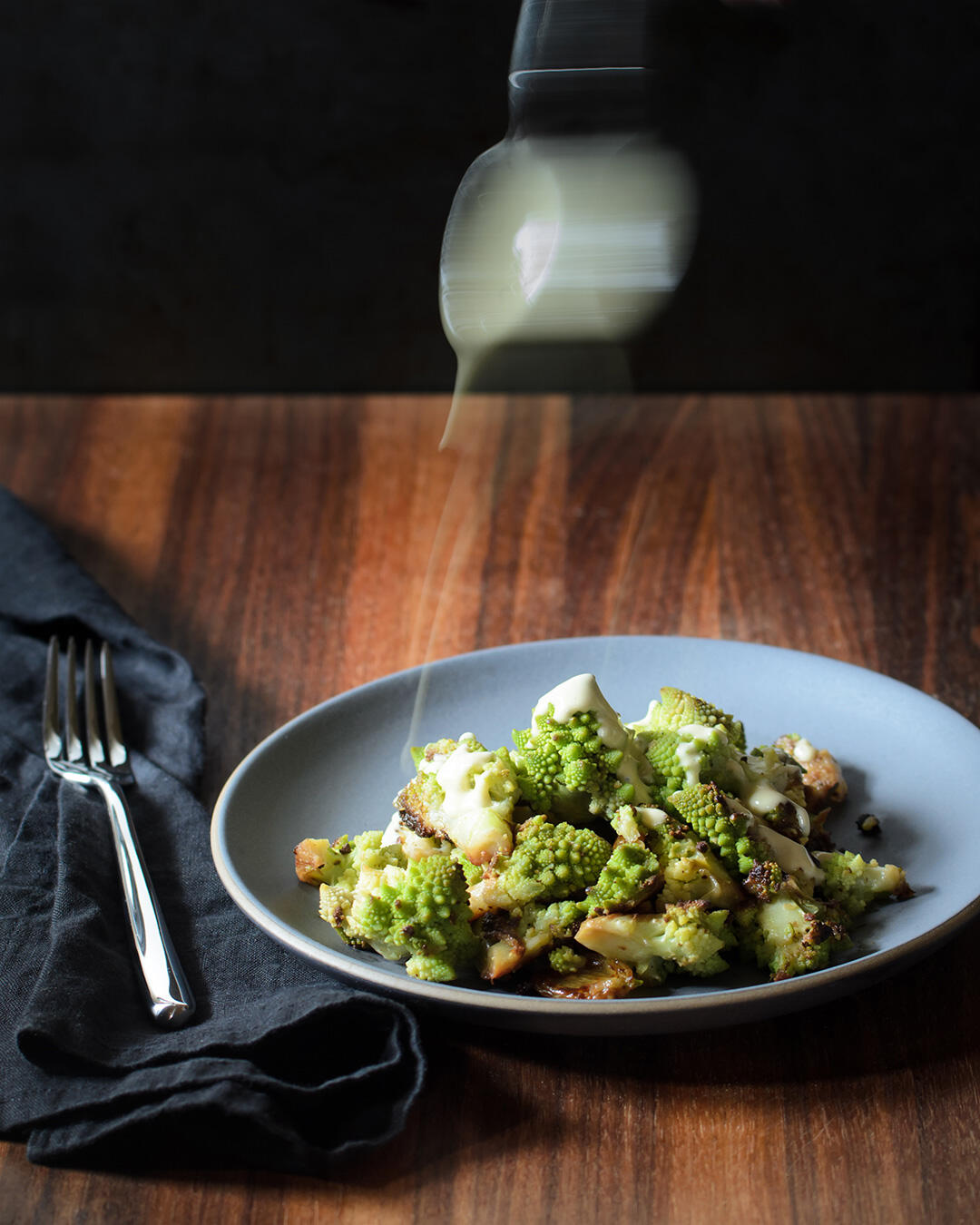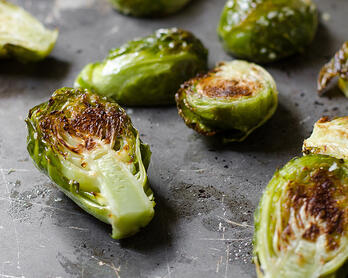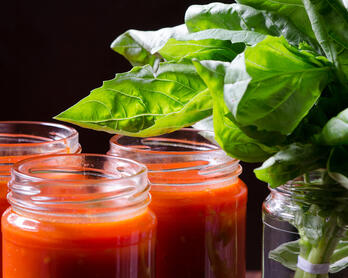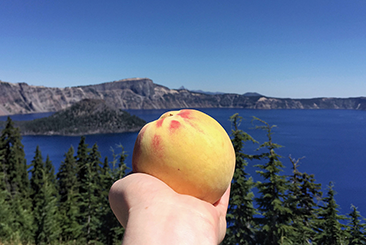Gjelina's Pan-Roasted Romanesco with Golden Raisins, Tahini, and Sumac
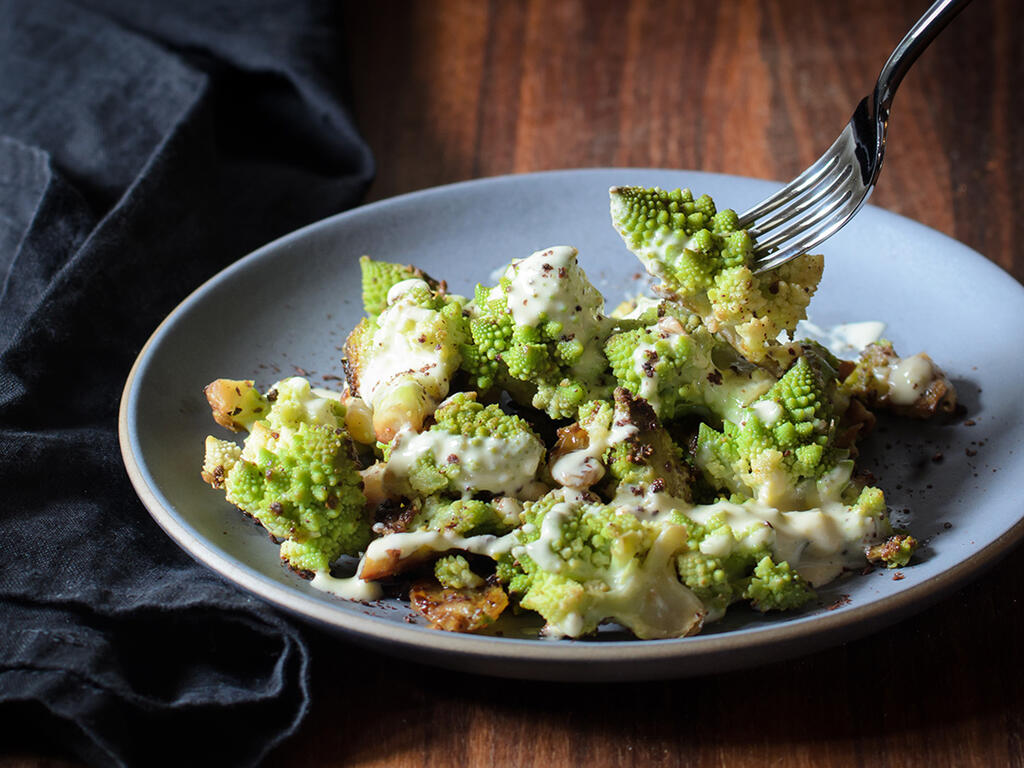
Romanesco is my veggie muse. It affords me the opportunity to ask The Google about fractals, is delicious, and also happens to be stunning. You can eat it raw, roast it hot and fast with olive oil, or fancy it up with some golden raisins, tahini dressing, and sumac. It's a fast and healthy winter treat that helps "every cell in your body" according to the Interwebs.
Speaking of delicious, this recipe is spot on. The process is easy and everything can be made ahead and served at room temperature. Find yourself some Romanesco and get to it. Also, as my posts here, here, and here suggest, the Gjelina cookbook should be on your shelf.
As I was writing up this recipe, my husband said, "If you cook it over an open flame, you can say, 'Romanesco's burning'". Amusing given the times.
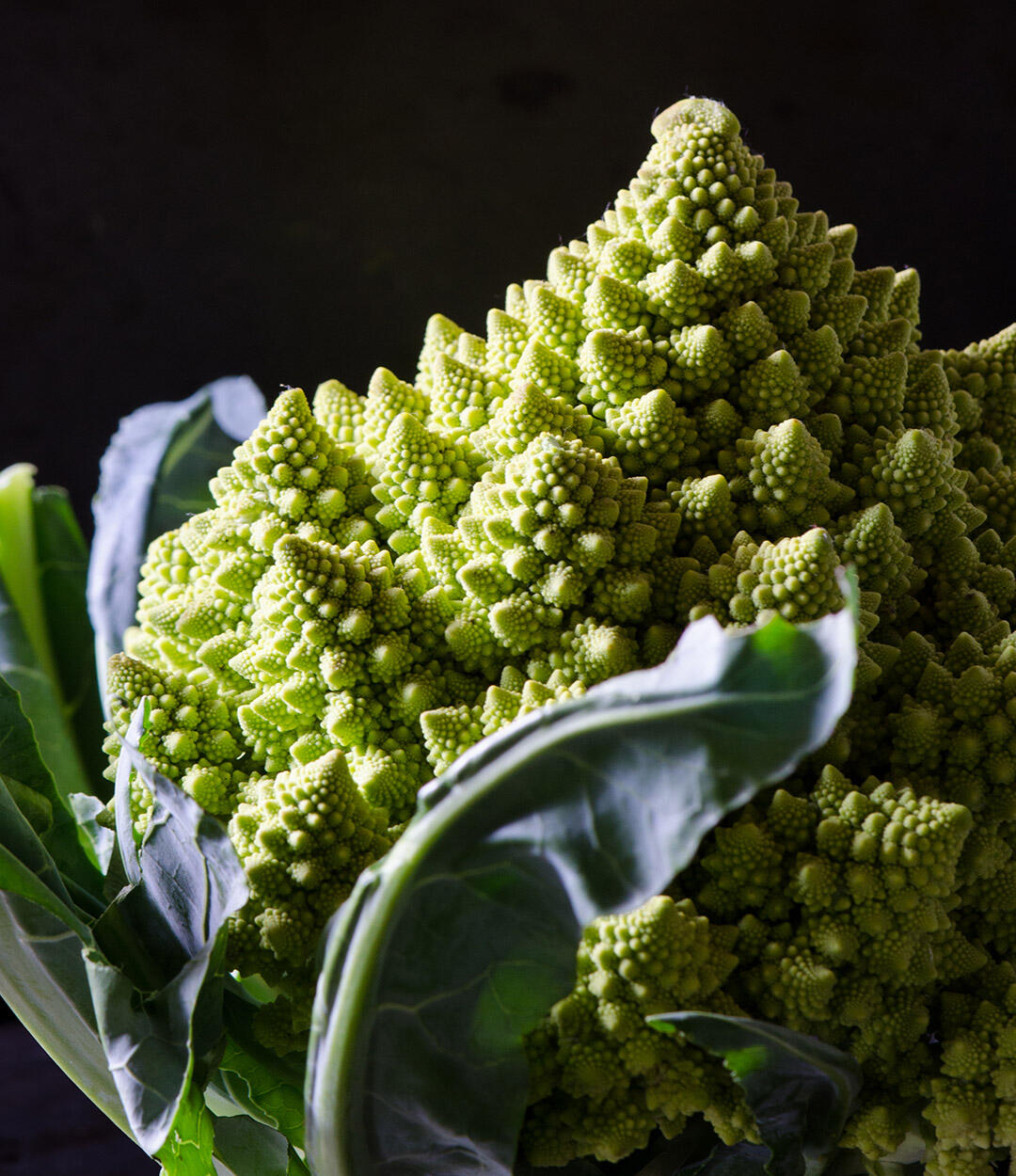
Useless Facts
What is a fractal? Better yet, what is a Fibonacci sequence?
A fractal is a mathematical set that exhibits a repeating pattern displayed at every scale.
As you can see, each part both small and large is (visibly) a copy of the whole. Technically, Romanesco is only an "approximate fractal" because the pattern terminates, but who's keeping score. I like my veggies green and nerdy so it's a fractal in my book.
In terms of the Fibonacci sequence, that's a series of numbers where every number after the first two is the sum of the preceding two (1,1,2,3,5,8,13, 21...). I haven't counted the florets, but apparently Romanesco's spiral is a Fibonacci sequence. It's a really interesting thing to stop and ponder. Even more fascinating is that there are many examples of the Fibonacci sequence in nature from pine cones to sunflowers. Why does this happen? The Google suggests that the Fibonacci sequence is an efficient growing pattern, hence maximizing space and energy. The mathematical wisdom and order of nature amazes me. I suspect there's a slightly more complex explanation, but for the sake of this post I'm keeping it simple.
What is Romanesco?
Romanesco is also known as broccoflower, Romanesco broccoli, or Roman cauliflower. It resides in the Brassica oleracea species of plant that includes cabbage, cauliflower, kale, brussels sprouts, and a few other vegetables that most 5-year-olds would decline with extreme prejudice. Romanesco dates back to 16th century Italy and is an edible flour that tastes like a nuttier version of traditional cauliflower.
Original vs. Adapted
The original recipe calls for two medium heads of Romanesco. My largest non-stick frying pan isn't big enough to accommodate that many florets in a single layer, so I just used one medium Romanesco and cut all of the remaining ingredients (aside from the raisins) in half.
Farmers | Artisans
I make an effort to source my food from local California artisans with a special focus on the Santa Monica Farmers Market. Below is a list of the talented folks who contributed to this dish.
- Two Peas in A Pod (Santa Monica Wednesday Market) / Romanesco
- Peacock Family Farms / Golden Raisins
- Milliken Family Farms / Heirloom Garlic
- Polito Family Farms / Lemons
- Trattore Farms (Sonoma) + Preston Farm and Winery / Olive Oil
- Brooklyn Sesame (not local to Cali, but boutique and excellent) / Tahini
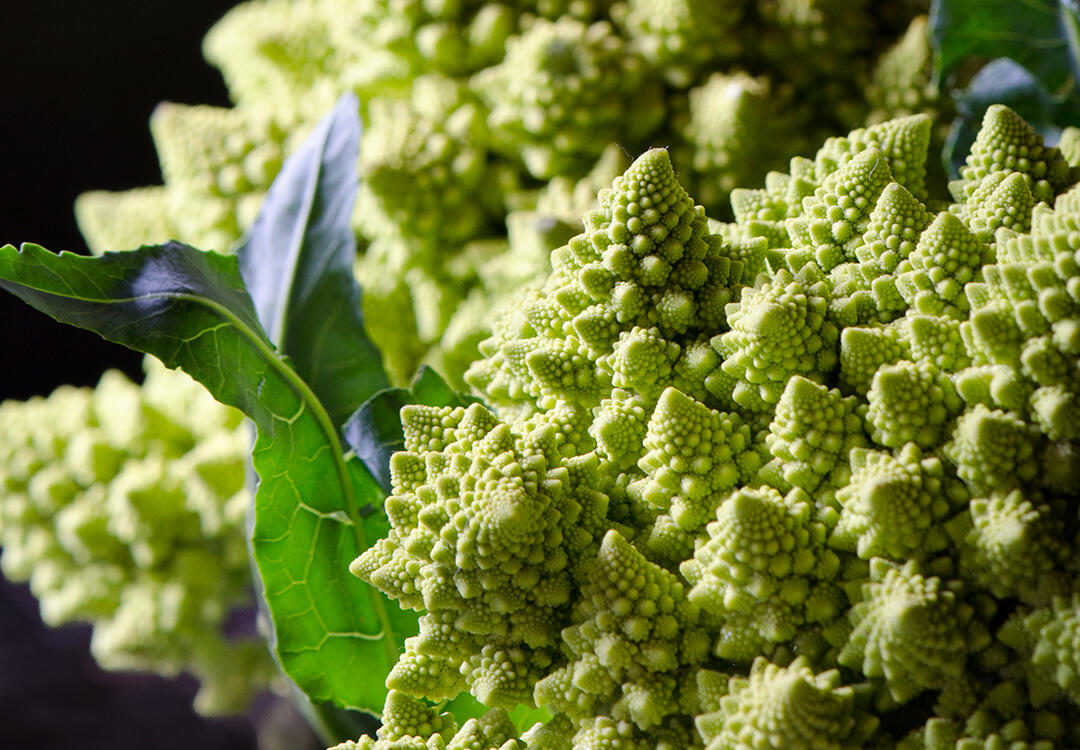
Tools
- Mini Measuring Cup with Spout (less than $5 and one of my favorite tools)
- 12-inch Frying Pan
- Whisk
Ingredients
Dressing
- 2 tablespoons (43 grams) tahini
- 1 1/2 tablespoons fresh lemon juice, plus more to taste (about 1 lemon)
- 1 small garlic clove, minced
- 1 tablespoon cold filtered water, plus more for thinning
- 1 tablespoon quality extra-virgin olive oil, plus more for cooking
- Flake-style salt
- Freshly ground black pepper
Pan-roasted Romanesco
- 1 medium head of Romanesco, trimmed and cut into 1-inch florets
- 1/4 cup golden raisins
- 1 tablespoon Homemade Vegetable Stock or filtered water
- 1 1/2 teaspoons ground sumac
- Maldon sea salt
- High-quality olive oil for drizzling
Instructions
Dressing
- In a small/medium bowl, whisk together the tahini, 1 tablespoon of cold filtered water, 1 1/2 tablespoons of lemon juice, and minced garlic.
- While whisking constantly, slowly drizzle 1 tablespoon of olive into the tahini mixture.
- With lemon juice and/or water (chef's discretion based on taste preferences, I usually use a 50/50 blend) adjust the thickness of the dressing. The sauce should be thick but not so thick that it can't be drizzled. Season with flake-style salt and freshly ground pepper to taste.
Pan-roasted Romanesco
- Add a couple tablespoons of olive oil to the frying pan (enough to cover the bottom) and heat over medium-high.
- When the oil is hot and shimmering (but not smoking), add the Romanesco in a single layer with the cut side down. Let the florets cook undisturbed for a few minutes until they start to develop a deep golden color. Toss the Romanesco and continue to cook until almost tender. Note: The Romanesco should be just shy of tender before you add the raisins. I added the raisins too soon the first time I made this dish and ended up picking them out of the pan so that the Romanesco could finish cooking.
- Lower the heat to medium, add the raisins, a pinch of flake-style salt, and freshly ground pepper, then cook for 2 minutes so that the raisins can soften.
- Raise the heat to medium-high, add the homemade vegetable stock or water to the pan, and allow everything to steam for about 1-2 minutes. The stock will evaporate quickly.
- Transfer the Romanesco to a serving plate or bowl.
- To serve, drizzle with the tahini dressing, sprinkle the sumac, then finish with sea salt to taste.
- Finally, drizzle some highly quality olive oil over the top.
- The Romanesco is great warm, room temperature, and even the cold leftovers are wonderful as a snack.
